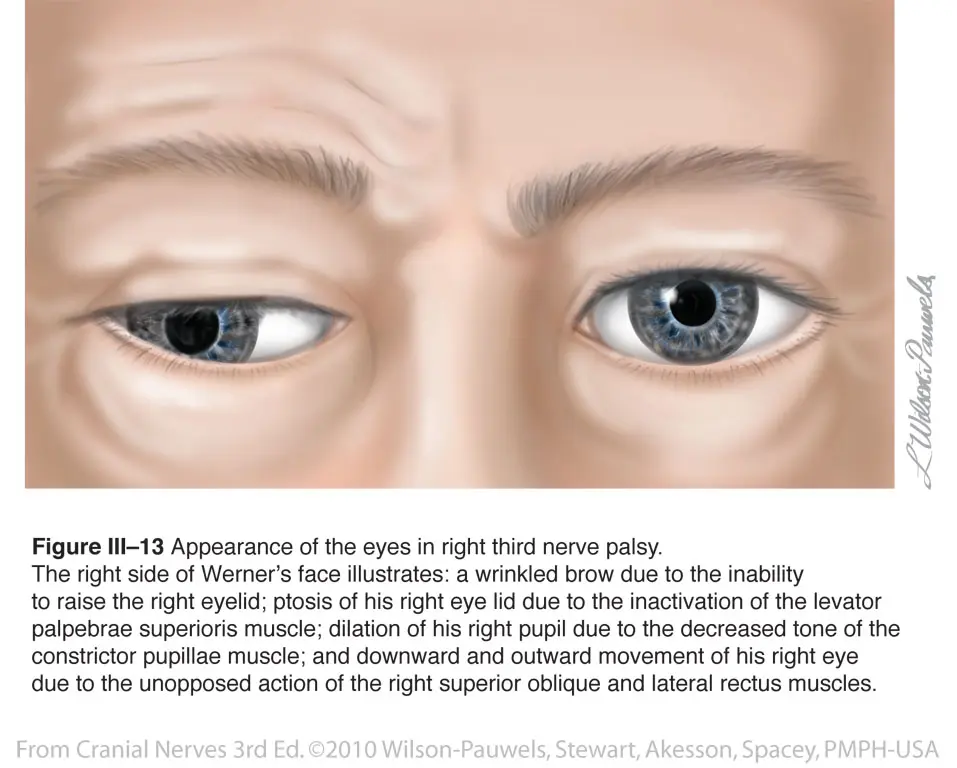Can Third Nerve Palsy be Cured?
Sometimes
Outcomes depend on the underlying cause and the extent of nerve damage; treatment aims to manage symptoms

What is Third Nerve Palsy?
Third nerve palsy is a neurological condition affecting the third cranial nerve, leading to eye movement and pupil abnormalities. Treatment depends on the underlying cause and may include medications or surgery. Regular monitoring is important for assessing eye function and managing symptoms.

Clinical Aspects

Characteristics
Dysfunction of the third cranial nerve, leading to various eye and facial symptoms

Symptoms
Double vision, drooping eyelid, pupil dilation abnormalities

Diagnosis
Clinical evaluation, sometimes imaging

Prognosis
Variable, depends on underlying cause

Complications
Eye movement issues, potential for double vision
Etiology and Treatment

Causes
Trauma, aneurysm, compression, inflammation

Treatments
Treatment of underlying cause, prism glasses, eye patching, surgery (in some cases)

Prevention
Treatment of underlying cause, prism glasses, eye patching, surgery (in some cases)
Public Health and Patient Perspectives

Epidemiology
Common, can occur at any age

Patient Perspectives
Lifelong management tailored to symptoms
As always, consult with healthcare professionals for personalized advice and care.
Share: